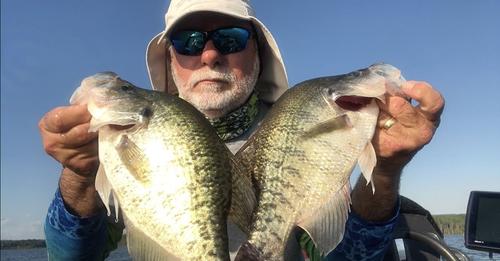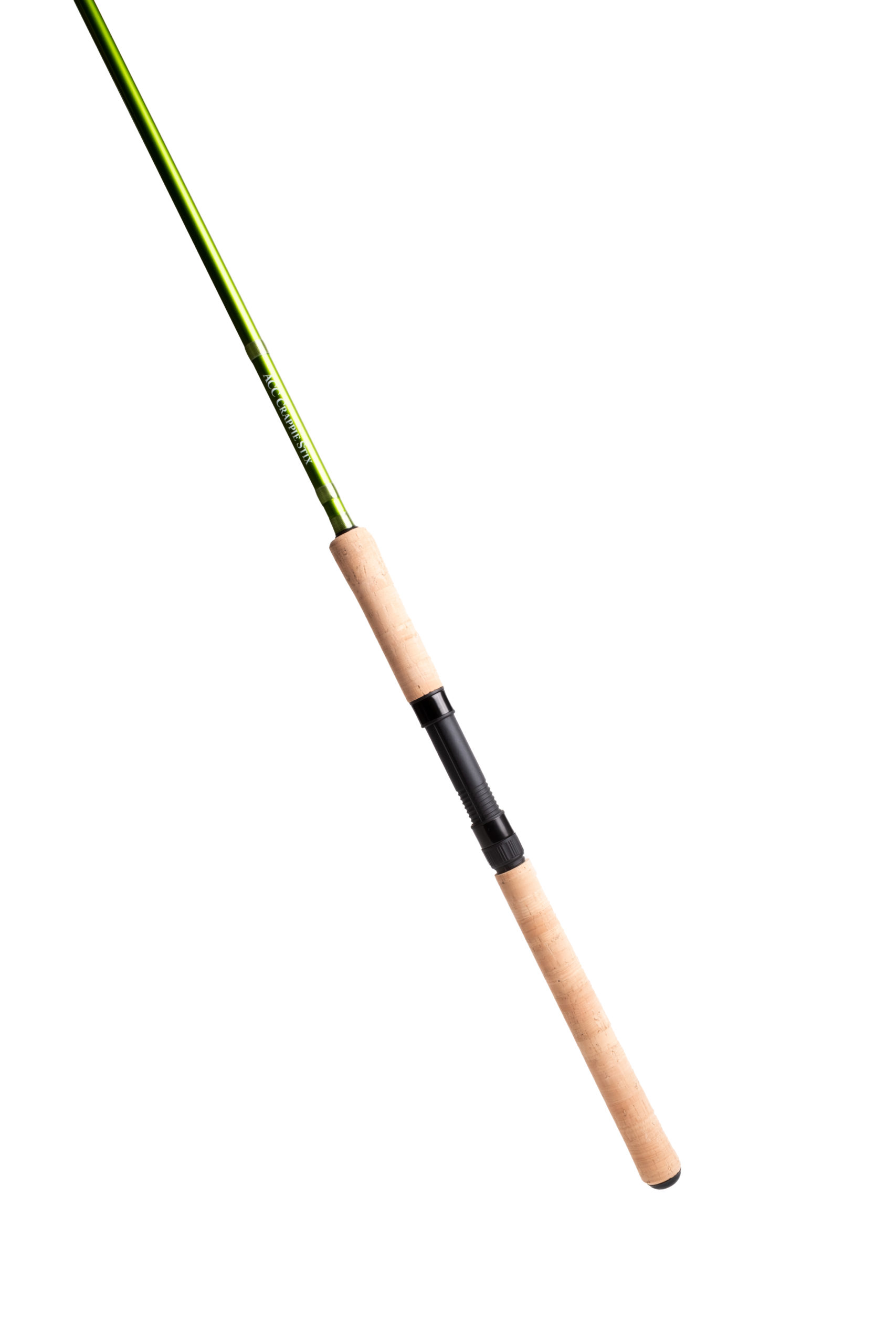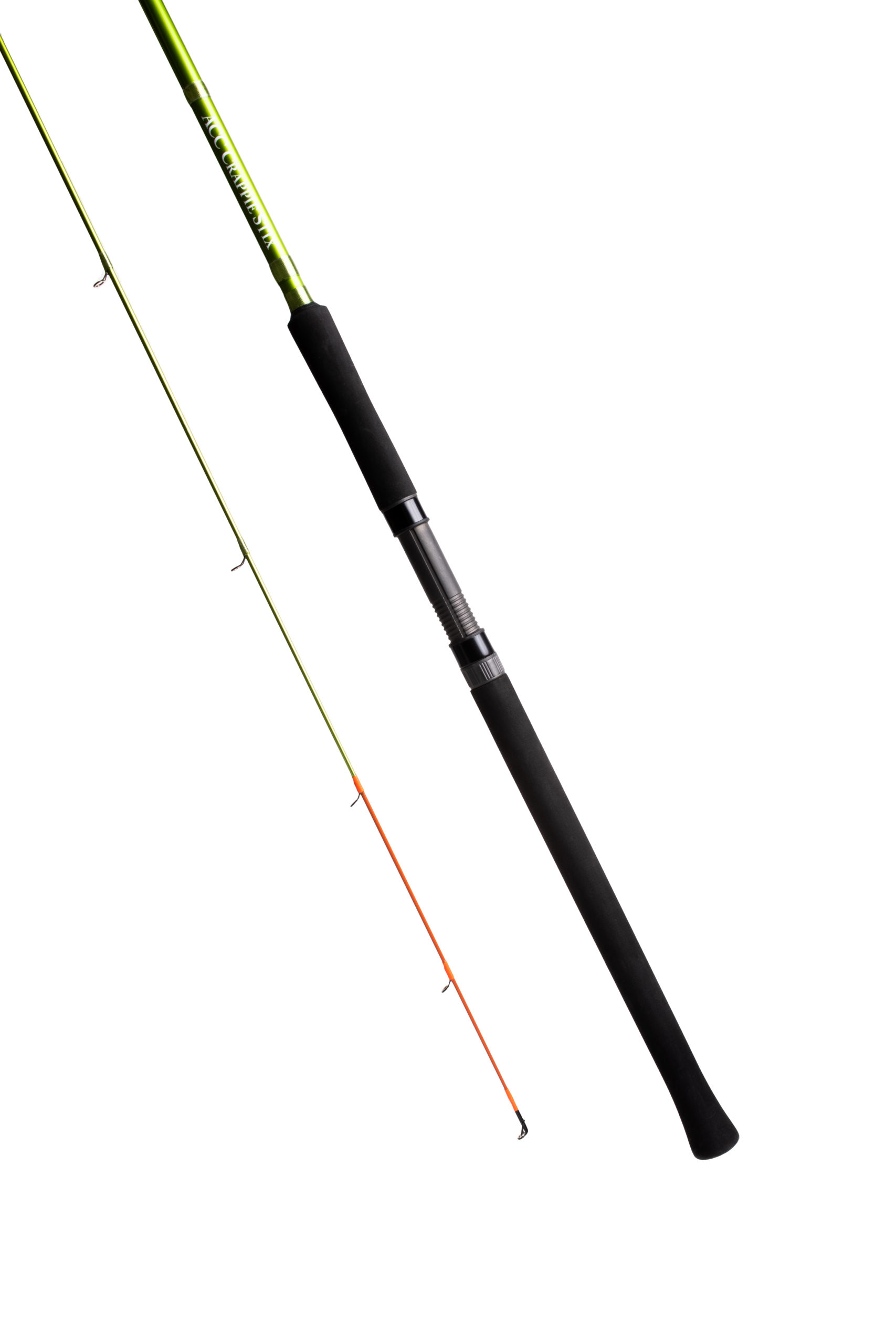To braid or not to braid

By Greg McCain
A basic dilemma in rigging for crappie fishing is line choice.
The options are many and varied. Some types come relatively cheap while a single spool of other varieties could buy a decent steak dinner. Older crappie fishermen have witnessed the evolution from mono to fluorocarbon to braid. The advancement continues today with even more choices (see ACC pro staff member Don McClish’s unique line choice elsewhere in the ACC blog).
Ultimately, the choice today comes down to this idea: Do I go the braided line route or do I stick with a more traditional option? Many, but definitely not all, choose braid.
Charlie Burrow (GO FISH with Charlie Burrow on YouTube) has seen all the advancements in lines through the years. Braid is his choice, and he points out the positives while acknowledging the negatives.
“Mono,fluorocarbon,or braid?” he said. “There is a great argument to be made for each. If you don’t have confidence in your tackle or jig, you won’t be optimizing your potential.
“I’ve tried them all and settled on 10 lb. Invisi-Braid by Spiderwire . There are pros and cons to them all, so go with the line that aggravates you the least and puts more fish in the box. For me, the Invisi-Braid is visible above water but disappears in water, which is a confidence factor for me.
“Braid seems to transmit the slightest touch instantly to my fingertips, allowing quicker hooksets. Speaking of hooksets, braid only requires a flick of the wrist, and many times just simply lifting the rod tip to achieve a solid hookup.”
Charlie, from Louisiana, also likes the small diameter of braid, a big plus in clear water.
Another positive attribute of braid has nothing to do with fishing, according to Charlie.
“The final plus is it sounds sweet in the wind,” he said.
The sweet sounds continue until the braid tangles around the rod, the only negative that Charlie points out.
“Now I have to say the way it wraps around a rod tip is enough to make a preacher curse,” he said, “but that’s a frustration I’m willing to put up with.”
Following are other ideas from ACC pro staff members who advocate the use of braided lines:
Jonathan Phillips (Alabama) uses six-lb. braid for casting, 12- to 14-lb. braid for vertical presentations, at times adding a fluoro leader in clear water. Pros for Jonathan: sensitivity and durability; cons: line tangles/knots “that you just have to cut and re-tie,” tip wrapping, not as good in wet weather and freezing temps.
Daniel Ellis (Tennessee) says, “I like to use braid, 10 lb. with an eight-lb. fluoro leader. I use a small crane swivel and use a tungsten weight above. You get a much better feel and a better hook set when you’re not in the best position. You can see it much better on the LiveScope, and the tungsten really shows up. I’ve not broken any rods with it. With the weight above your jig, it helps get unhung by letting it fall back below the jig. That’s just our setup that we use on Kentucky Lake.
“I also use braid when pulling cranks but not jigs. With the braid on cranks if you catch a trash fish, you can horse them without them running through your other lines.”
Dave Holzner (Illinois): “When trolling crankbaits, I notice much more vibration on the rod tip with braid than I do with mono, plus the color options are more with braid, and it lasts forever. The only drawback sometimes with no stretch in the line is the treble hooks can tear mouths, and you might lose a fish where mono stretches a bit and helps out. Mono is way cheaper though.”
Goose Gutzman (Minnesota): I use 10-lb. braid, four-lb. diameter on all my jigging rods with a mono leader. The reason I use it is I can really feel everything, and in the fall when fishing deep water, I can get my jig down faster than mono and I can set the hook without all the line stretch.
“I prefer hi-vis because many many times the crappie will crush it long before you get close to the school, I can see that slight twitch and set the hook instantly.
“I prefer mono for all of my bobber poles because it’s hard to put a bobber stop on braided. It shreds the braided and I’m typically not fishing deep, and I’m using a fixed bobber.”
Nick DeWolf (Louisiana): “Five-lb. braid if I’m not fishing stumps, very thin and easy to cast at fish 45 feet. Six- and 10-lb. fluoro for brush fishing.”
Kennieth Pierce (Texas): “Eight- to 10-lb. PowerPro hi vis line for me. All year long, no matter if I’m pitching, shooting, or vertical jigging. Don’t really use leaders either. I like the sensitivity and strength of braid. Braided line doesn’t give me any issue in wind or anything else. I’ve learned to adjust in the wind and keep line twist down. I also don’t have to worry about memory with braid.”
On the opposite side of the debate, various pro staffers opt for line other than braid:
Wesley Miller (Louisiana): “I do not use braid. I can’t keep it from wrapping up around the end of the rod. Also you can more easily break a rod with braid. Eight-lb. fluorocarbon is all I use.”
Fred Mooney (Illinois): “No braid for me!!! Terrible to control in the wind, and I’m just fishing panfish. I believe it’s overkill. I would rather break off a .50 cent jig than lift a set out of the water and disturb everything.”
Jeff Barnes (Alabama): “I don’t use braid. I guess I’m too cheap. I’m still using mono, Eight- and 10-lb. test. I use the best rods on the market (ACC) and cheap line with a $12 reel.”
Keith Acker (Louisiana): “I do not use braid. 10-lb. fluorocarbon is all I use. It sinks faster than braid so I can get deeper faster. Braid will wrap around the tip of my pole. Braid can snap poles on hook sets as well.”









